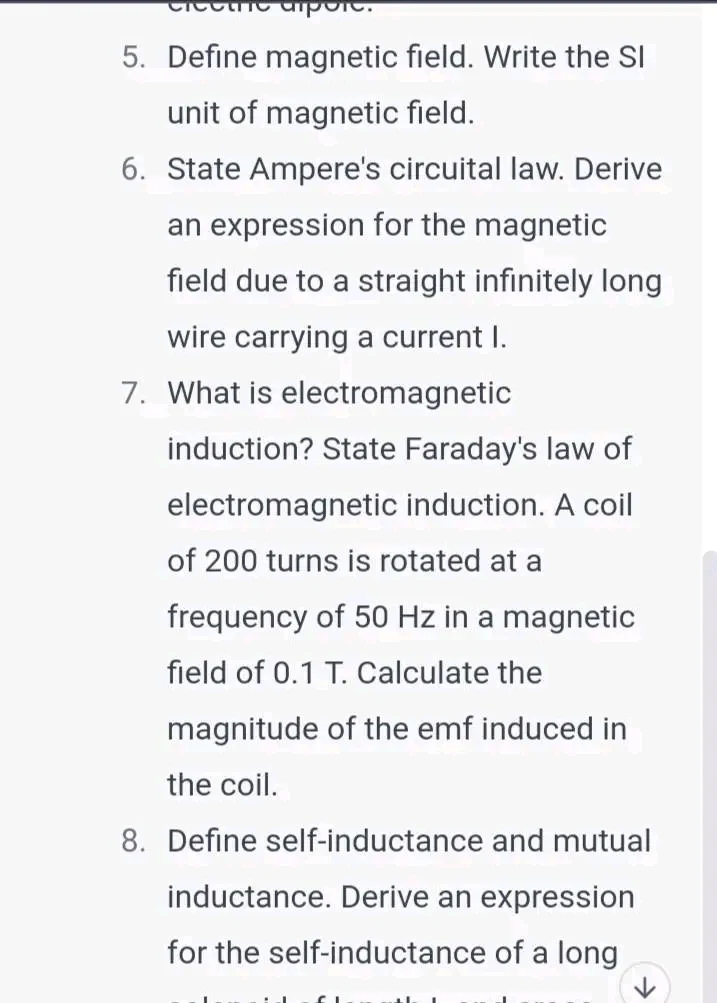Important Long Questions for class 11 Physics
Unit 1: Mechanics
1. State the parallelogram law of vector addition. Derive the expression for
the magnitude and direction of the resultant of two vectors inclined at an
angle theta from each other.
2. State triangle law of vector addition. Obtain an expression for the resultant
of two vectors P and Q inclined at angle(0).
3. Define projectile. Show that the path of projectile projected horizontally from the top of tower is parabolic. At what angle does it hit on the ground?
4. A projectile is fired with a velocity v and making an angle 0 with the horizontal Derive expression for (a) maximum height (b) Time of flight (c)horizontal range. Also find the condition for maximum horizontal range.
5. State and prove the principle of conservation of linear momentum.
6. Derive Newton's first law and third law of motion from Newton second law of motion.
7. What is the angle of repose? Show that when a body just begins to slide down on an inclined plane, the coefficient of friction is equal to the tangent of angle of inclination of the plane.
8. Define work. Derive an expression to calculate work done by a variable
force.
9. What is the principle of conservation of energy? Show that total mechanical energy of a body is conserved when it moves under the action of gravitational field.
10. What is elastic collision? Prove that the colliding objects exchange their velocities in one dimensional elastic collision.
11. Define centripetal force. Show that the acceleration of body moving in a circular path of radius 'r' with uniform speed v is v square r and is directed towards the Centre of circle.
12. What is conical pendulum? Show that the period of oscillation of this pendulum is given by T= 20 lcos0 g, Where symbols have their usual meanings.
13. What do you mean by the banking of a curved path? Derive an expression for the banking angle.
14. Derive an expression for the variation of acceleration due to gravity of the earth with the altitude and explain its meaning.
15. What is a gravitational potential energy? Obtain an expression for the gravitational. Potential energy of a body at a distance r from the Centre of the earth.
16. Define escape velocity. Find an expression for the escape velocity from the surface of the earth.
17. What do you mean by parking orbit? Derive an expression for the orbital. Velocity and hence find time period of the satellite revolving around the earth.
18. Explain the concept of geostationary satellite. Find an expression for the total energy of the moon revolving around the earth.
19. What is meant by movement of inertia? How is it related with the rotational kinetic energy of a body?
20. What do you mean by a rigid body? Obtain an expression for the moment of inertia of a thin and uniform rod about an axis passing through the Centre and perpendicular to its length.
21. Derive an expression for the energy stored in a stretched rod. Define the term energy density of a body under strain.
22. What is simple pendulum? Show that motion of the bub of the simple pendulum is simple harmonic obtains an expression for its frequency.
23. Define SHM. Derive a relation for total energy of a simple harmonic oscillator.
24. Obtain an expression for the time period of mass m attached with a spring placed horizontally on a smooth table.
25. Define SHM. Show that the oscillation of mass suspended from helical spring is simple harmonic.
26. Define surface tension and surface energy of a liquid and derive a
relation between them.
27. What is capillarity? Derive an expression for the rise or fall of liquid in a capillary tube.
28. Derive an expression for terminal velocity of a small spherical ball of radius 'a' dropped gently in a viscous liquid of density 'σ' and coefficient of viscosity.
29. State and prove Bernoulli's theorem for flow of non-viscous fluids.












